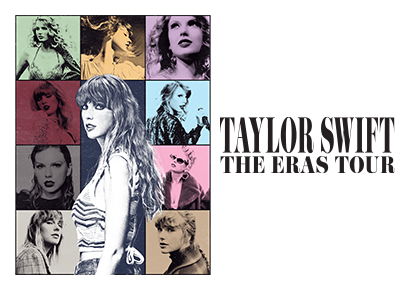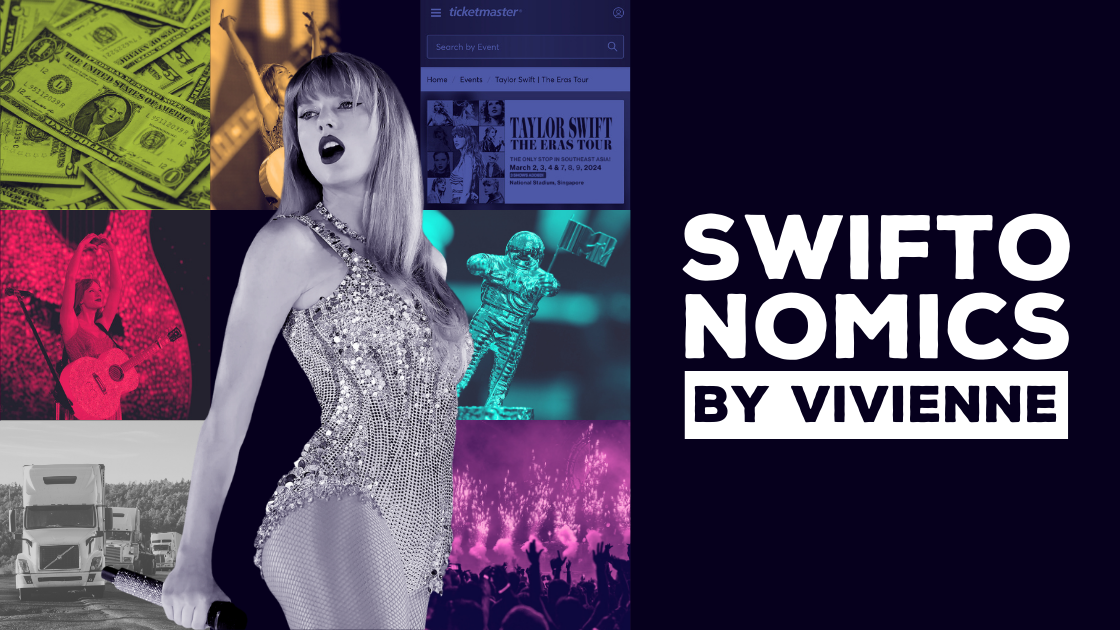
Recently winning an astounding 9 trophies at the 2023 MTV Video Music Awards (VMAs), Taylor Swift is undoubtedly a legend, a pioneer and an icon in the pop music scene. Ever since her debut in 2006, she’s been crushing it in the music world, topping charts and bagging numerous awards. And let’s not forget about her all-time hits: from Back to December through Blank Space to Lover, her music is simply never ‘out of style’. This is precisely why die-heart fans just aren’t ready to ‘shake off’ any opportunity to see the American singer-songwriter perform in-person, even if it means paying scalpers who demand up to $30,000 USD per ticket for a spot in The Eras Tour.
As her sixth concert tour, Taylor is finally gracing stadiums once again after COVID-19 lockdowns. The tour was kickstarted in Glendale this past March and is set to span 146 dates across 5 continents, keeping her on the road until November next year. It stirred so much excitement and hype among fellow Swifties across the globe that the ticket presale website, Ticketmaster, crashed multiple times due to the insanely high web traffic! To put this into perspective, as many as 22 million fans virtually queued up for the 2024 Singapore show tickets, and the total number of ticket sale registrations hit such an unprecedented high that the star might have to perform over 900 shows if she were to accommodate for all of this demand!
What’s Behind the Hype for the Tour?
Dubbed ‘Swiftonomics’ by economic analyst Augusta Saraiva, the economics of The Eras Tour sheds much light on explaining fan behaviour, economic developments, and beyond.
The degree of enthusiasm in getting Taylor Swift tickets is truly unparalleled. Apart from the dedication and love for Taylor, this fervour is linked with a phenomenon known as ‘revenge spending’. After enduring restrictive movements imposed by the COVID-19 pandemic, people are now more eager than ever to indulge in what they’ve missed out on in the past three years. Travel and live entertainment, in particular, have become priorities for many.
And let’s not forget about the ongoing economic challenges, particularly in places like the US. They have led people to seek solace in what can be deemed as ‘affordable luxuries’. It’s a classic manifestation of the ‘lipstick effect’ in action, where consumers choose to treat themselves to small indulgences that lift their spirits during economic uncertainties.
Grammy Superstar Turned Economic Dynamo
On the broader scale, the economic impacts of a tour as massive and phenomenal as this one are beyond extensive. To provide some quick stats, each Eras show grossed $13 million USD, and the gross ticket revenue is predicted to surpass $1 billion USD. Wondering how revenue figures reach such staggering heights? Apart from the fact that each show houses massive audiences, the digitisation of music streaming in the recent decade also significantly reduced the demand for physical albums, which prompted artists to divert their revenue stream to live concerts by raising ticket prices.
The economic impact isn’t confined to Taylor alone. It ripples through the cities she’s toured, benefitting other merchants and businesses: in economic terms, we coin these third-party knock-on benefits as ‘positive externalities’. Thanks to the fans travelling to the shows, her concerts have indirectly boosted other sectors by creating extra demand for hotels, restaurants, transport, leisure, and more.
Predictions indicate that net consumer spending in the US alone, driven by the tour, will reach $4.6 billion USD. This prominent stimulus to post-pandemic economic recovery is surely some great news to many cities after months of recessive growth—no wonder even politicians like Justin Trudeau petitioned for her to tour in their respective countries!
Taylor’s Benevolence through an Economic Lens
Despite earning handsome profits from her shows, the superstar is renowned for her generosity towards her Eras crew, which makes her even more likeable. For instance, she awarded $100,000 USD to each semi-trailer truck driver, a gesture that mirrors what some employers do in response to the tight labour market situation in the US. Wary of losing workers, these employers opted to split increased profits (following post-COVID recovery) with employees in the form of increased wages or other compensations as part of a retention strategy.
Back to Taylor’s case, her generosity extends beyond her innate kindness. She also seems to be aware of the high rate of driver departures and replacements in trucking. This is largely attributable to both the external pessimistic macroeconomic backdrop and the job requiring extended periods away from home of up to 6 months. Having committed to delivering world-class performances, any disruption in the tour is not at all desirable and on-time delivery of every show element is crucial. Last-minute crew withdrawals could prove costly to Taylor’s team, so rewards are necessary to keep everyone motivated enough to stick around.
Conclusion
While The Eras Tour continues to make waves both in the world of music and economics, we find ourselves anticipating the next chapters of this enthralling saga. What economic insights will be unveiled during the forthcoming tours by megastars like Coldplay, Pink and Madonna? How will they engage with the post-pandemic/recession world, along with the unwavering fervour of fans and sneaky resale strategies employed by scalpers?
As we eagerly await these spectacles, one can’t help but ponder the boundless economic benefits to be generated by these artists. Taylor Swift, a force to be reckoned with on her own, has already demonstrated her capacity to create substantial economic impacts and unprecedented cash flows. Let’s stay tuned for more melodies and economic marvels in the world of live entertainment!


